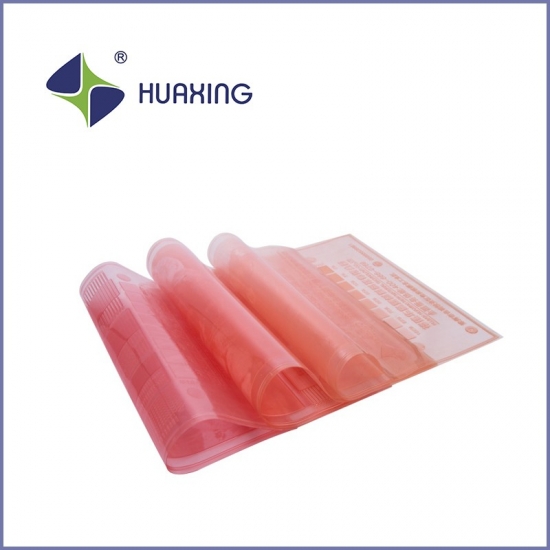Flexo printing presses use fluid inks that are highly mobile. The ink is transferred to the graphic part of the printing plate through the ink fountain roller and anilox roller and inked. Then the printing pressure is applied by the pressure roller, the ink on the printing plate is transferred to the substrate, and finally the printing process is completed by the dry side.
Main advantages of flexo printing machine
(1) The unit is easy to install and assemble, and post-press processing is easy.
(2) Suitable for short-run printing.
(3) Changing the running route of the material belt through the guide roller can realize double-sided printing at one time.
Flexo printing machine characteristics
The reason why the flexographic printing machine develops at a constant speed is that in addition to the technological breakthroughs in plate materials and inks, its own characteristics are an important reason for attracting users.
1. The machine structure is simple, easy to operate and maintain. The price of a flexographic printing machine with the same function is about 30-50% of that of an offset printing machine or a gravure printing machine.
2. The genetic material has strong adaptability, and satisfactory printing effects can be obtained from 0.22mm plastic film to 10mm corrugated cardboard.
3. The embossing force is small, about 19.6-39.2N/ cm2, especially suitable for printing corrugated paper and other substrates that cannot withstand excessive pressure.
4. The printing cost is low, mainly because the machine price is low, the plate making cost is low, the paper loss rate in the printing process is low, and the production cost is 30-50% cheaper than gravure printing.
5. The print quality is very good. The inking system with short inking path of the anilox roller not only simplifies the structure of the inking system, but also can realize quantitative control of film thickness. The breakthrough in high-performance photosensitive resin plate technology has greatly improved the resolution and dot reproducibility of the printing plate (up to 1-95%). Flexo printing can achieve 300 lines/inch color level printing, and the printing effect is comparable to offset printing and gravure printing.
Three attributes of flexographic printing
In recent years, flexographic printing has developed rapidly in the domestic market by virtue of its unique advantages in the field of packaging printing, especially in the fields of labels, flexible packaging, corrugated boxes, aseptic liquid packaging, paper cups, paper bags, and napkins. Flexographic printing has been widely used application. The reason lies in the following three properties:
01Packaging attributes
Flexographic printing is widely used in packaging design and decoration products, whether it is for post-printing or pre-printing corrugated boxes/cartons/paper bags/paper cups/napkins/tray paper, breathable films with simple designs, beautifully printed flexible packaging films/Tetra Pak Package/label labeling, or varnish coating to enhance the aesthetics of products, etc., all have flexographic printing. Flexographic printing seems to be born for packaging, and its packaging attributes are very prominent.
02Technical attributes
Flexographic printing has outstanding technical attributes in processes and procedures such as prepress, plate making and printing.
The importance of prepress to flexographic printing is self-evident. For a long time, the goal of prepress is to make printing achieve brighter and smoother highlights, higher solid printing color density and less dot blocking, while the flat-top dot technology of flexographic printing increases prepress personalization, Flexibility and complexity. At the same time, pre-press personnel create unlimited possibilities for flexographic printing pre-press work and activities through color management, fully understanding customer needs and knowing the flexographic production conditions and status.
03Environmental protection attributes
Flexographic printing is a recognized green printing method. Non-toxic, harmless, non-heavy metal and water-based ink with very low VOCs can be directly discharged-these advantages make the green image of flexographic printing deeply rooted in the hearts of the people. The VOCs content of flexo solvent-based inks and the amount of solvent added in the printing process are significantly lower than those of gravure printing, and the adverse effects on the environment and health are relatively much lower. The flexographic plate-making process also continues to abandon the traditional mixed solvent of tetrachloroethylene + n-butanol, and instead adopts more environmentally friendly plate-washing solvents and solvent-free plate-making methods (such as heat-sensitive plate-making and water-washing plate-making).
Green environmental protection is not completed, only in progress. Flexographic printing is continuously developing and innovating new technologies and products that are more low-carbon, energy-saving and consumption-reducing, and its environmental protection features will become more and more popular.
From the analysis of application fields, the potential of flexographic printing in packaging is mainly in the field of flexible packaging and labels. With the increase of applications in the field, the application fields of flexographic printing will be more balanced.
From the analysis of technological innovation, intelligent automation will effectively improve the quality and efficiency of flexo printing.
From the perspective of environmental protection, flexographic printing will use more water-based inks and more environmentally friendly plate-making methods, and standardize the daily treatment of printing wastewater and waste residues.
Therefore, flexographic printing, which combines packaging, technology and environmental protection, will continue to make steady progress in the long run
Related Products







